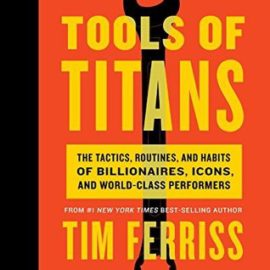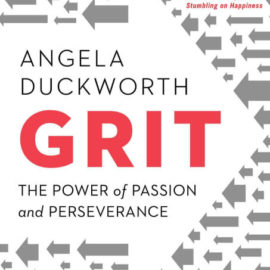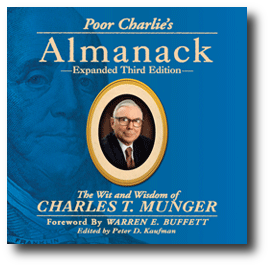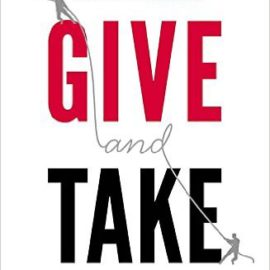
Want to get the main points of Merchants of Doubt in 20 minutes or less? Read the world’s #1 book summary of Merchants of Doubt by Naomi Oreskes and Erik M. Conway here.
Many have no doubt wondered why the United States or even world governments have been so lumbering to act on policy regarding public health such as for smoking. Others may have been curious about why we have struggled so much to achieve scientific consensus on a variety of controversial areas such as global warming or ozone holes. Interestingly, these problems, and others, are all linked by specific tactics and people that one side uses to obfuscate and drag out the issue.
Since the 1950’s, a playbook has been made and rerun in a variety of different industries for corporations and special interest groups who aren’t willing to give up their profits without a fight. The same tactics have been used to stymie debates and prevent policy decisions in areas that include:
- The concept of the Nuclear Winter, and the viability of the SDI.
- Causes of Acid Rain
- Causes of the Ozone hole
- Smoking and Lung Cancer
- Global Warming being man-made or natural.
- The environmental danger of Pesticides, specifically DDT.
These “merchants of doubt” have seized upon established facets of American culture to ruthlessly exploit blind spots of the American policy system. For example, a hallmark of the American judicial and free press system is the willingness to hear both sides of an argument. Both sides of a trial have the opportunity to obtain an attorney to convey their side. Newspapers, in an attempt to appear fair and impartial, often seek out opposing viewpoints and counterarguments. The merchants of doubt use this system to their advantage by creating a semi-plausible other side of a mostly ironclad argument. While over time their claims will be discredited, they will be able to use the reach of the media to create trappings of a superficially plausible argument that makes the issue appear less clear.
This is also true for scientific progress. Science works effectively because it is a gradual, decentralized process that no one individual has full control or influence over. Scientific conclusions or theories may be wrong in the short-term, but the corrective mechanisms within the scientific community make it extremely like that incorrect theories get weeded out over time. In the long run, corporations who employed merchants of doubt likely knew they would lose. But every year they could delay oppressive regulations or public health campaigns meant another year of fantastic profits. They weren’t out to win and overturn the scientific consensus, they were merely attempting to obfuscate and delay the day of a clear consensus.
Perhaps the most surprising, yet human, part of the argument is the ethics and reasoning of many of the scientists who played crucial roles as merchants of doubt. Though their actions serve the selfish and greedy interests of major companies and acted against public interest, the scientists themselves possessed very different motives. All ardent Cold Warriors who had performed valuable service against the danger of the USSR, these scientists were understandably very wary about the threat from a big, interfering government. Americans have naturally been wary of a big, intrusive government since the days of the founding fathers.
These Cold Warrior scientists proved to be the perfect agents for big businesses whose interests were aligned against public health. With the prospect of money and fulfilling an ideological role against the evil of an intrusive government creating unwanted regulations, these scientists could lend immense credibility to the side that distinctly lacked credibility. Men like Fred Seitz had their own complicated circumstances, such as becoming isolated over time by the scientific community and angry at the antiscientific views as part of American life. He saw environmentalists and their ilk as Luddites who were rejecting scientific progress and leading to unwanted government intervention.
Naturally one might wonder why more scientists have not come out. This is a critical part of the problem. First, it takes a considerable amount of time to write out and convey the necessary scientific data, arguments, and point out the weaknesses of counterarguments. It takes even more time for laymen to unpack and understand these complex arguments. Scientific facts, published by people unaware of how to market or reach a mass audience, were usually printed in publications few laymen would read. On the other hand, the industry sponsored antiscientific doubt was plastered all over mass circulation media. Corporations knew how to market and had the connections to reach a wide audience; both these qualities are generally lacked by scientists.
In addition, individual scientists don’t want to speak out and take the limelight when they are actually a member of large teams and organizations. They don’t want to be perceived as credit-hogging or liking publicity stunts by their peers. Lastly, many scientists simply don’t view public relations as part of their job and believe others can handle that role while they focus on the research.
Overall, one of the reasons the public and policymakers have been fooled so much is because they have taken prestigious scientists at their word even in dubious circumstances or when opposed by a large consensus of other scientists. Most of the major scientists the merchants of doubt have employed were taking positions in multiple fields, none of which they had any real expertise in. Here, the otherwise unassailable reputation of scientists and science worked against America uncovering the truth. In actuality, all science is incomplete and there is room for uncertainty, but that does not mean we shouldn’t go where the weight of evidence and the overall consensus points.
Tactics
Funding partisan research
- Most scientists are ever-dependent on and ever-searching for funding. Searching and applying for funding takes away from valuable research time, so many scientists would not think twice about taking industry-backed funding even if they had no interest aligned with the motives of the corporations sponsoring the research. Many scientists undoubtedly felt that it didn’t matter who paid for it so long as they were able to do science.
Claiming that more research is needed, or that the hypothesis is far from proven
- For example with smoking, the human body is very complex and causation is not always clear. So Tobacco companies would argue that lung cancer might be caused for other reasons, and that it did not conclusively prove that smoking was dangerous.
- Naturally everybody likes the clarity of more research, but the key element here is that the status quo favored the Tobacco companies. If instead the policymakers had temporarily changed the status quo by creating anti-smoking regulations until more research made the issuer clearer, Tobacco companies would have been forced to abandon this tactic. This worked because inertia was in their favor.
Showing that the suspected link was not equivocal and that another explanation may be possible:
- Smoking regulations were stalled for decades by claiming a combination of the above three tactics. The evidence had been overwhelming since the 1950’s that smoking was dangerous to public health, but it was not ironclad. So tobacco companies and their representatives shifted the argument by claiming that the issue wasn’t clear, and it wasn’t fair for policymakers to jump to unwarranted, hasty conclusions.
Making large amounts of false claims
- In an attempt to disprove the assertion that aerosol products were creating holes in the ozone layer, scientists like Fred Singer made many plausible-sounding claims over the years attributing this to volcano eruptions. These claims could be initially sustained by using faulty second to fourth-hand descriptions of the original research, rather than the original research itself.
- When Singer’s claims about global warming were proven to be false, he switched tracks to claiming that another scientist who supported his views of being unfairly attacked by some of the scientific community. This diverted discussion away from the actual research itself and onto more fuzzy matters.
Creating uncertainty and using that to persuade the media to give their view a fair hearing under the guise of giving a voice for both sides.
- Tobacco companies and their lobbyists and PR firms managed to implant the view that it was only fair to grant their side a chance to make their views heard in order to ensure objectivity. This allowed them to cloud the debate with a variety of other obfuscation tactics now that their voice would be heard.
- This dishonest tactic obscured the fact that in the scientific debate, the other side already had a fair hearing, and they had lost. The tobacco industry was in effect asking for a second chance without providing any real justification as to why it deserved it.
Tampering with peer review
- Peer review is the scientific system of vetting theories and research by having other scientists review them. Scientists as a group trust that each peer-reviewed paper was done in good faith because no scientist can read every paper. When trying to handle the Acid Rain problem, a governmental panel sought the consensus of a group of scientists to survey the research on the subject in a peer review matter. After they had given their report, the panel report was secretly tampered in ways that cast doubt on whether legislation addressing acid rain was needed. The false arguments which cast doubt on the problem were picked up and ran with by media outlets and think tanks, and the official government refrain became “We don’t know what’s causing it [acid rain].”
Smearing attacks and false accusations
- Like many other impeccably credentialed scientists willing to speak up against big business, Ben Santer chose to write a scientific report on the dangers of climate change. A think tank of physicists accused him of doctoring the report and expunging dissenting views to deceive the public. Other false claims were made like framing him making changes to his document to deceive the public, when in actuality he had made the changes to respond to peer reviews. Even though other scientists and institutions rose to his defense, some sloppy presentations of his arguments by neutral publications led to the false claims sticking. Over the years Santer was forced to spend an enormous quantity of time and energy trying to defend his reputation.
Conflating Possibility with Probability and the Weight of Evidence
- The merchants of doubt use a subtle psychological trick to shift the debate onto more favorable terms for themselves. For smoking, the weight of probability was very heavily on the side that smoking was harmful. So biomedical researcher Martin Cline first claimed there was no conclusive evidence. When pressed for an answer, he said that he couldn’t give anything with certainty, but noted that he could imagine scenarios where smoking didn’t have anything to do with lung cancer.
- While all of this is technically true, it is changing the conversation from reasonable doubt on the side with a large weight of evidence to a binary answer of full or no certainty.
Notes
Overall this is an excellent book that conveys complicated patterns that persist throughout important topics. The only possible flaw is that the book suffers from the political arguments (right wing groups = anti-science) that are interspersed throughout the book. While a case could be made for such an accusation, the evidence supplied in the book is weak and lacks nuance or context.
Like this summary? Want to learn more from books than ever? You'll love my product Shortform.
Shortform has the world’s best guides to 1000+ nonfiction books and articles. Even better, it helps you remember what you read, so you can make your life better. What's special about Shortform:
- The world's highest quality book guides - we discuss the book's main ideas, with expert analysis and commentary expanding will beyond the book
- Interactive exercises that teach you to apply what you've learned
- Discussion communities - get the best advice from other readers
Sound like what you've been looking for? Sign up for a 5-day free trial here.






